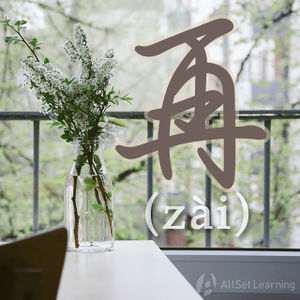Difference between revisions of "Sequencing with "xian" and "zai""
| Line 54: | Line 54: | ||
当描述一系列前后关联的行为步骤或事件发生的过程时,你需要用到更丰富的连词。"然后"是最常用的,表示"and then";"接着"作为连词表示"next, afterwards"。跟"然后"比,"接着"还可以作为副词,表示"动作的继续",如"接着做,接着说"。 | 当描述一系列前后关联的行为步骤或事件发生的过程时,你需要用到更丰富的连词。"然后"是最常用的,表示"and then";"接着"作为连词表示"next, afterwards"。跟"然后"比,"接着"还可以作为副词,表示"动作的继续",如"接着做,接着说"。 | ||
| − | When you are describing a series of actions, steps or consecutive events, you need to diversify your conjunctions. 然后 (ránhòu) is most commonly used, this conjunction means “and then”. Alternatively, you can use 接着 (jīezhe), as a conjunction | + | When you are describing a series of actions, steps or consecutive events, you need to diversify your conjunctions. 然后 (ránhòu) is most commonly used, this conjunction means “and then”. Alternatively, you can use 接着 (jīezhe), as a conjunction that means “next, afterwards”. Compared to “然后” ,“接着” can also be used as adverb, expressing that continuing action: ex. "接着做,接着说” |
A great example to help you understand this: | A great example to help you understand this: | ||
Revision as of 07:47, 21 March 2018
-
Level
-
Similar to
-
Used for
-
Keywords
The word 再 (zài) actually has a lot of uses, beyond just "again." 先⋯⋯,再⋯⋯ (xiān..., zài...) is a pattern used for sequencing events, much like "First..., then..." in English. This pattern can also include 然后 (ránhòu) meaning "and after that."
Contents
Basic Usage
In the pattern below, 再 has a meaning of "then" or "and then."
Structure
先 ⋯⋯ ,再 ⋯⋯
Examples
- 先 洗 手 再 吃。Wash your hands first, and then eat.
- 我 喜欢 先 洗澡 ,再 睡觉。I prefer to take a bath before I go to bed.
- 请 你 先 买 票 再 进。Please buy a ticket before you enter.
- 你 要 先 做 作业 ,再 看 电视。First you need to do your homework, and then you can watch TV.
- 我 想 先 找 工作 ,再 搬家 。I want to find a job first, and then move to a new place.
Colloquial Usage with 再说
You may have learned that 再说 can mean "in addition." Well, this usage of 再 is a more literal combination of 再说, fitting into the 先⋯⋯再⋯⋯ pattern.
So in this usage, 再说 doesn't really mean "in addition." Rather, it most literally means "and then we'll talk." In other words, "let's just do this now," and then after we see the result, we can talk some more about next steps. There's kind of a "let's see how this goes first" feeling to the expression.
Structure
Note that in the pattern below, the sentence normally ends with 再说.
先 + [Verb Phrase] + 再说
Examples
- 先 吃饭 再说 。Let's eat first, then we'll talk.
- 先 休息 一下 再说 。Let's rest a little first, then talk.
- 你 先 看 完再说 。Finish reading first, and then we can talk.
- 我 先 问 一下 老板 再说 。I'm going to ask the boss first.
- 你们 先 讨论 一下 再说 。You guys discuss a little first, then we'll talk.
"and then" with 接着
当描述一系列前后关联的行为步骤或事件发生的过程时,你需要用到更丰富的连词。"然后"是最常用的,表示"and then";"接着"作为连词表示"next, afterwards"。跟"然后"比,"接着"还可以作为副词,表示"动作的继续",如"接着做,接着说"。 When you are describing a series of actions, steps or consecutive events, you need to diversify your conjunctions. 然后 (ránhòu) is most commonly used, this conjunction means “and then”. Alternatively, you can use 接着 (jīezhe), as a conjunction that means “next, afterwards”. Compared to “然后” ,“接着” can also be used as adverb, expressing that continuing action: ex. "接着做,接着说”
A great example to help you understand this:
- 今 早 我 起床 以后 先 准备 早饭 ,再 叫 孩子们 起床 ,接着 我们 一起 吃早饭 ,然后 我 送 他们 去 学校 。After I got up this morning, I first prepared breakfast, and then I woke up the kids. Afterwards, we ate breakfast together. After that, I took them to school.
Sources and further reading
Books
- Integrated Chinese: Level 1, Part 1 (3rd ed) (pp. 258-9) Anything Goes (无所不谈) →buy
- Integrated Chinese: Level 2, Part 2 (pp. 19-20) Anything Goes (无所不谈) →buy
- 卓越汉语-公司实战篇 (pp. 172) 卓越汉语-公司实战篇 →buy



